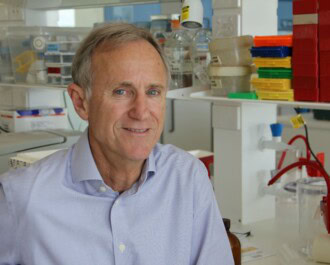
A new Melbourne study has the potential to improve mammographic breast screening for all women. The results show that it is possible to identify an individual’s risk level, and then tailor the screening intervals and intensity appropriate to that person. It is hoped that this will dramatically improve the efficiency of breast screening, by ensuring that women at high risk are screened more frequently than those at low risk.
Currently, most women over 50 across Australia are offered the same mammographic screening regime (typically once every two years). However, it is well known that there are a number of risk factors that can increase the likelihood of a woman developing breast cancer. As such, NBCF-funded researcher Professor Ian Campbell set out to develop a risk prediction tool, which could help improve screening processes by tailoring it to an individual’s risk profile.
Over the three-year project, Professor Campbell and his team at the Peter MacCallum Cancer Centre developed a risk prediction algorithm. Their model was designed using information from the largest breast cancer dataset in the world, which included over 45,000 women. The risk model takes into consideration breast tissue density, genes and lifestyle factors.
This risk prediction algorithm will be used in a clinical trial being planned in partnership with BreastScreen Victoria. Women will have the opportunity to use an online information tool to decide whether they would like to be involved in the trial, which will then use the risk model to determine what their individual screening program looks like.
The potential benefits of this risk model are significant. The algorithm will likely improve detection in women at high risk, by identifying them at an early stage and providing evidence to support more intensive screening. On the flip-side, women who are identified as being low-risk will be able to reduce the number of screening visits they have, saving time, money and limiting their exposure to medical testing. Importantly, the risk prediction model will provide women with more data about their individual situation, empowering them to make the best informed decisions about their health.
Professor Campbell says the model has the potential to drastically improve breast cancer screening processes, but that more research is required before it can be rolled out across Australia.
“Before a tailored screening program is implemented nationally, it is important to firstly conduct a clinical trial in order to formally assess women’s attitudes and experiences,” he said.
“Initial data shows that women are quite amenable to the idea of tailored screening, and we also have enthusiastic support from BreastScreen Victoria. We look forward to expanding the use of this risk tool nationally in the coming years.”
The study was funded by NBCF and the Cancer Australia Priority Driven Collaborative Research Scheme.
More News Articles
View all News



